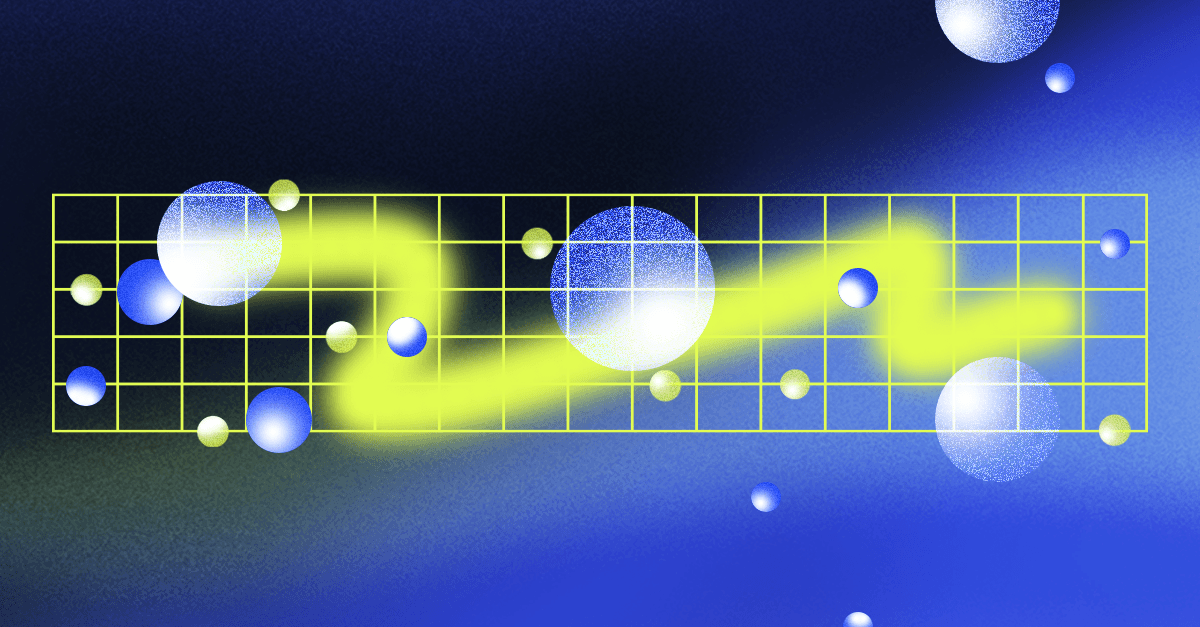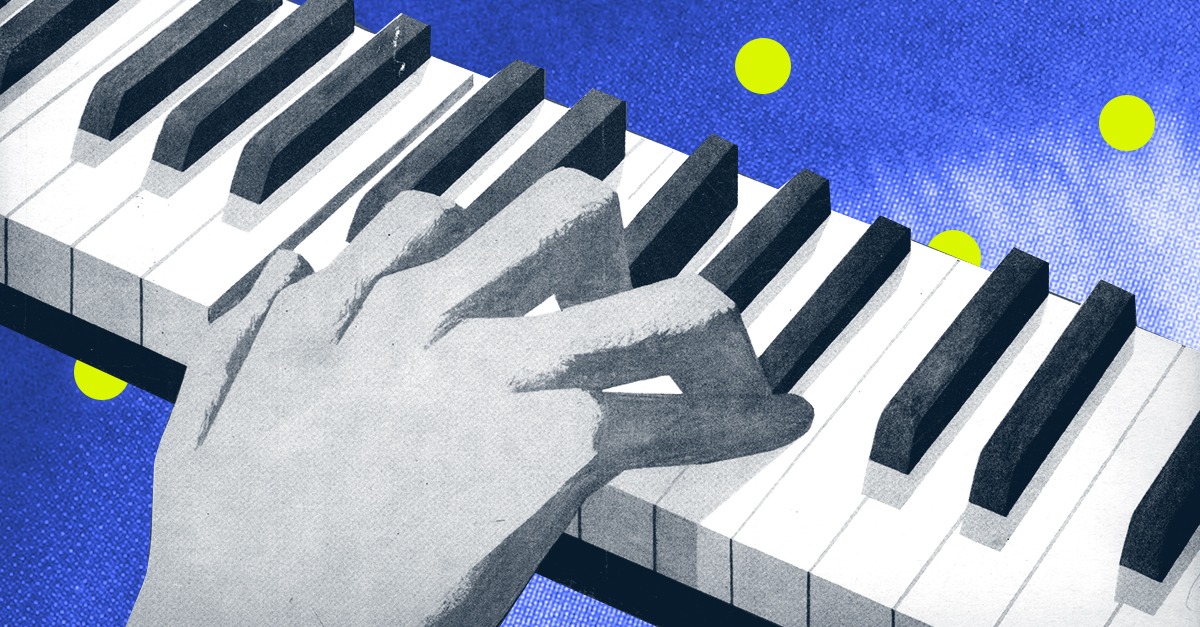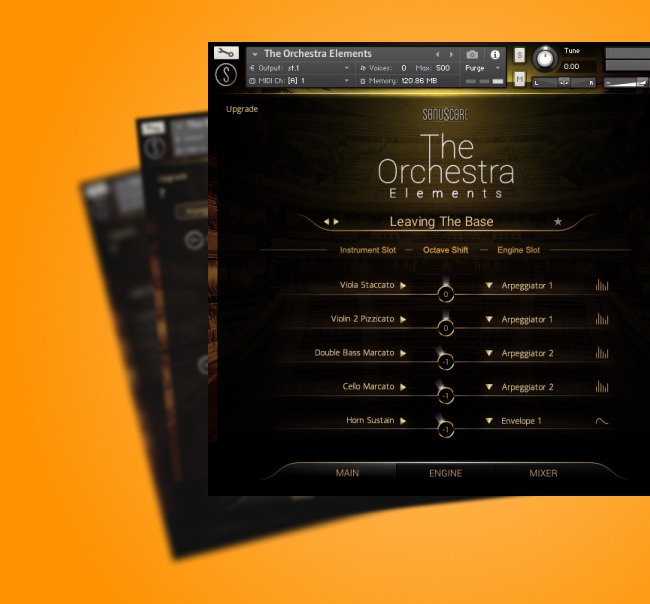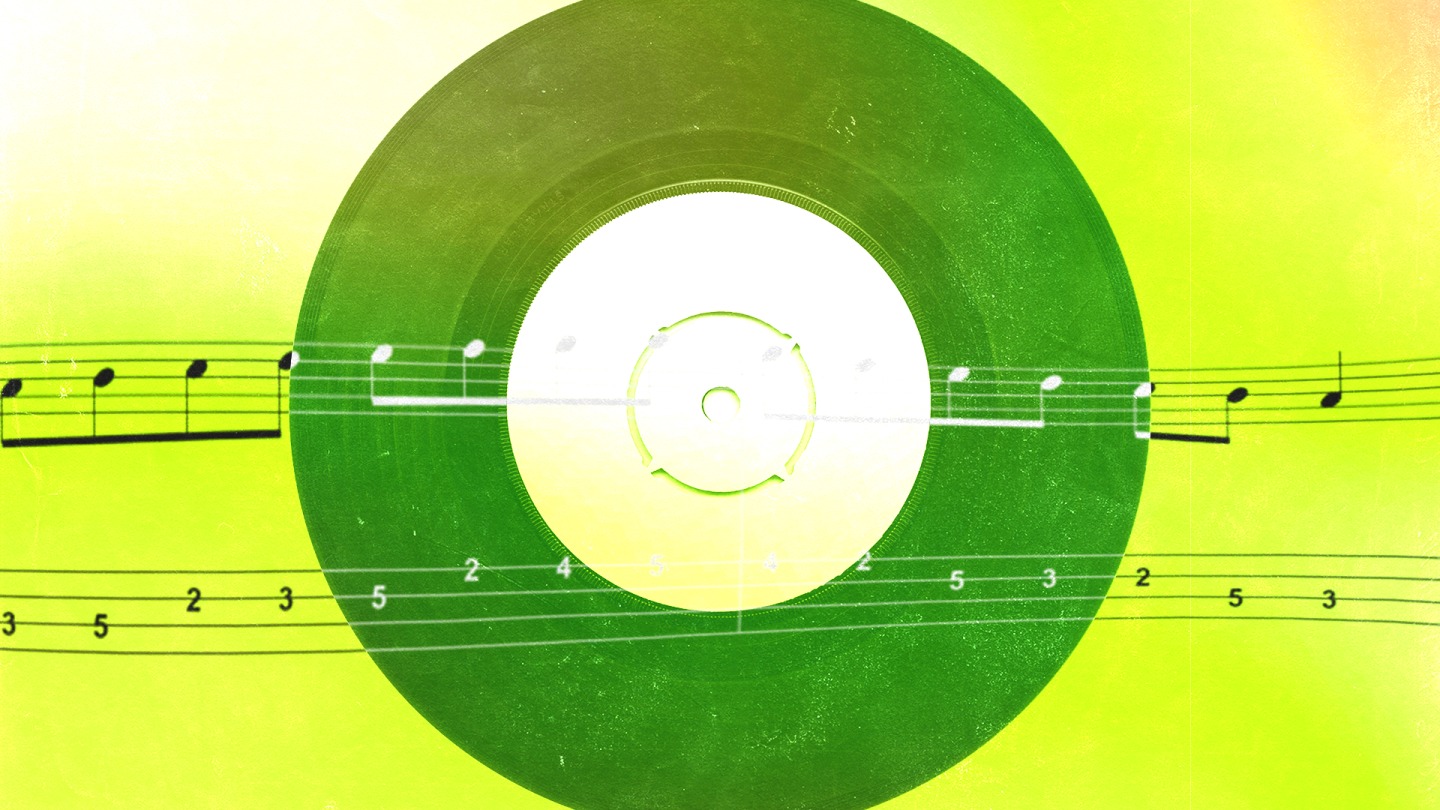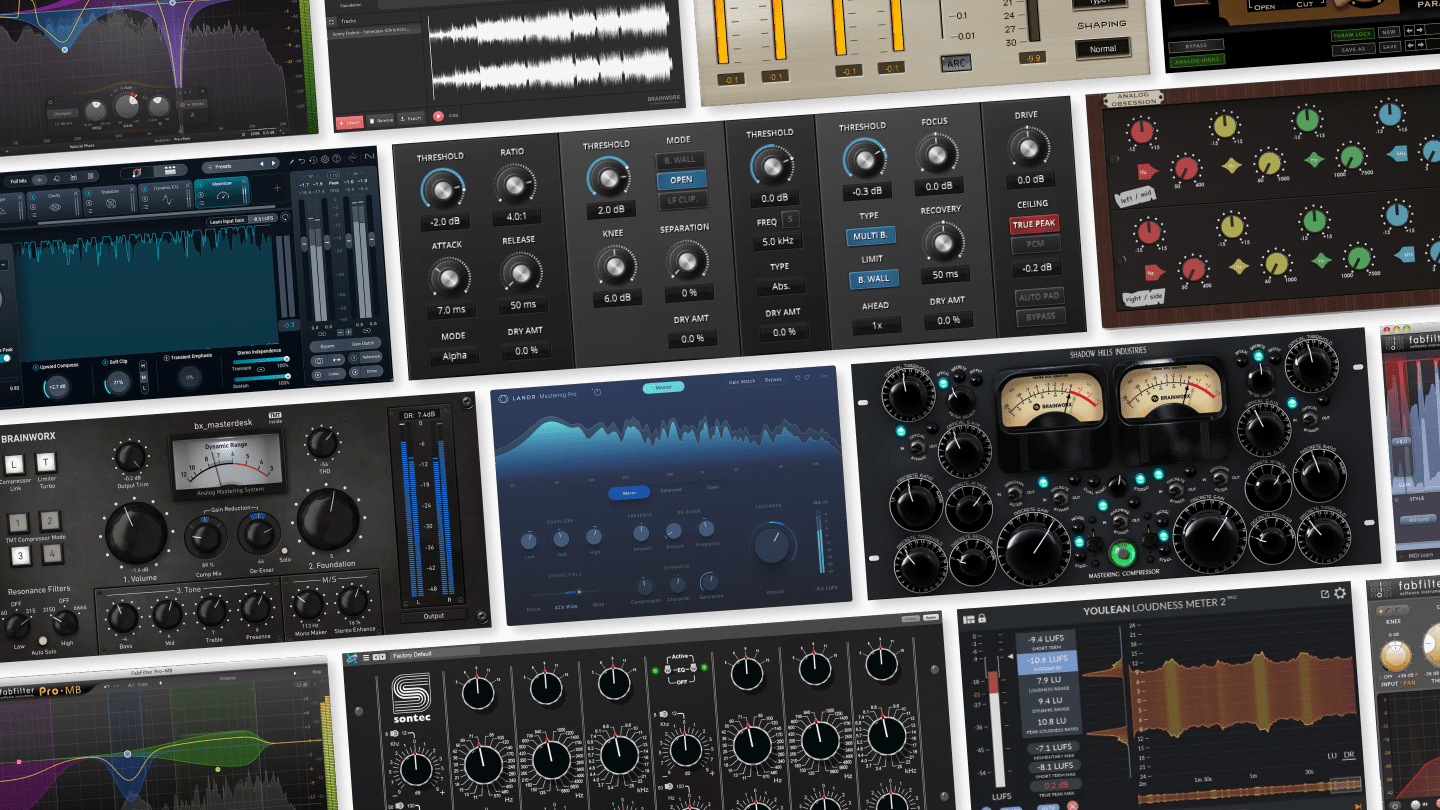
8 Cinematic Chord Progressions for Epic, Dreamy Sound

Chord progressions can express a huge range of emotions, and that’s why they’re such an important part of film and television scores.
But how do score composers write truly cinematic chord progressions that support the story in a memorable way?
To help you figure this out, let’s take a look at the chord theory behind a handful of unforgettable scores and unpack what’s happening behind the music.
8 Epic & Cinematic Chord Progression
Understanding chord progression theory
To understand chord progression theory, it’s important to master a few basic concepts.
Chords are always played with in the context of a musical key and that key’s scale. If a song or soundtrack is written in a major key, it will have a set of in-key chords for each degree of the scale.
This set of in-key chords is known as the diatonic chord scale. They are most often written using Roman numerals, with major chord triads using capital letters and minor chord triads using lowercase letters.
Here’s what the diatonic chord scale looks like for major keys.
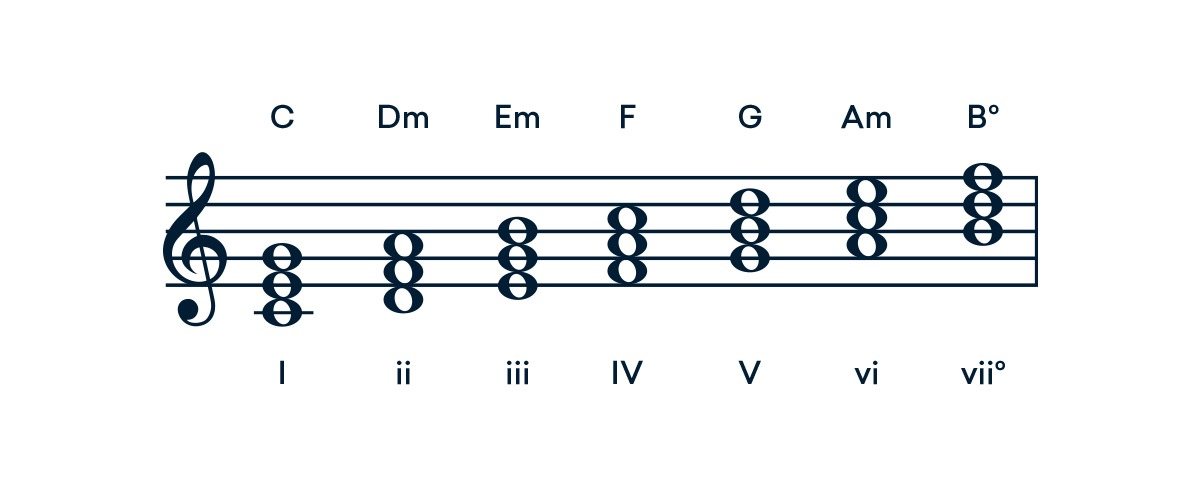
The diatonic major chord scale.
And here’s what the diatonic chord scale looks like for minor keys.

The minor diatonic chord scale.
Of course, composers and artists are not required to keep the chords they use in their chord progressions strictly within the song’s key.
As you’ll see in a handful of examples below, composers will use out-of-key chords as thematic devices to create tension and release.
That’s why in many of these examples I’ve opted to share the raw chord progressions with the actual chord names, instead of the roman numeral style of notation.
However, I’ll still share the roman numeral style of notation under each MIDI roll example.
1. Pirates of the Caribbean chord progression
Klaus Badelt and Hans Zimmer’s theme for Pirates of Caribbean is incredibly iconic It may be one the most recognizable themes ever.
Looking at the chord progression, you’ll actually find a fairly simple chord progression in D minor that stays within the diatonic confines of the D minor chord scale.
The cinematic chord progression cycles through a i-VI-v-i-VI-III–i chord format, barely veering away from the minor chords of D minor throughout the theme.
The theme starts with a D minor chord, but towards the end the chord progression veers into major chords: D minor’s major 6 and 7 chords giving the progression an epic and uplifting sound.
Considering that Pirates of Caribbean doesn’t use any borrowed chords or extended chords (unlike the other chord progressions we’ll explore on this list) it makes for very simple starting point for writing epic chord progressions.
One especially distinctive characteristic of the Pirates of the Caribbean theme is its rhythm. The polyrhythmic motif played throughout the theme is what makes it so catchy and interesting to the ear.
2. Inception chord progression
This chord progression is another incredible masterpiece from Hans Zimmer. It mostly follows a harmonically simple chord progression in the key of A minor: A minor, E minor, G major and D major.
Looking at the eight chords, you can see why the chord progression is so cinematic and epic—it’s progressively getting more and more major.
The first four chords use two minor chords followed by two major chords, creating a melancholic but ultimately uplifting feeling.
But it’s the substitution of the E minor chord for a C major 7 that makes the second half of the chord progression that much more uplifting—which I think reflects the storyline and mood of Inception quite well.
Zimmer uses this hopeful shift towards major chords throughout the film to evoke the epic and dreamy feeling portrayed in Inception.
Of course, the simplicity of the chord progression makes space for modal exchanges using A Dorian with the distinctive note of F sharp. This maintains the core feeling and makes the harmonies and melodies dreamy and hopeful—but not completely minor and dark, or resolved and major.
3. Interstellar chord progression
Alright, before diving into some more complex cinematic chord progressions, let’s take a look at a very epic chord progression from Hans Zimmer that’s still very simple harmonically.
The chord progression to Instellar’s main theme only uses three chords in the key of A minor: F major 7, G major 6, A minor and return back to the F major 7 starting chord.
The chord progression creates a sense of “going somewhere” because each chord steps up through the major chords in A minor, ultimately resolving on the root.
That of course reflects many of the concepts at play in Interstellar, considering that “going somewhere” mysterious and dark is a strong theme in the film.
Zimmer does also build up tension in the chord progression by resting on an E minor chord (the minor v chord in the A minor scale), before shifting back into the main chord progression.
However, this E minor chord is only used to build tension at particular moments, as it’s not part of the main chord progression.
Considering how simple the overall chord structure is, it’s impressive how much Zimmer can get out of it with the help of instrumentation, rhythm, melodies, textures and other composition tools.
4. Harry Potter Theme chord progression
Now that we’ve gone through a few Hans Zimmer masterpieces, let’s dive into our first John Williams score.
In Harry Potter and The Sorcerer’s Stone, Williams uses a very interesting series of chords during the ending sequence where Harry receives a book from Hagrid containing an old picture of his late parents.
Williams’ score perfectly captures the scene’s moving emotions with a series of interesting chords using this chord progression in A major: A major, A diminished 7, A major 7, C#minor.
But on the next repetition of the melody, Williams instead uses an A major chord played over C# in first inversion, then he switches the A diminished 7 to a satisfying D major chord.
This makes for the following chord progression—A major/C#, D major, C# minor.
Then the arrangement builds towards a final satisfying resolution, where the film also ends Williams alternates between the four and five chords, D major and E major, before finally resolving to a satisfying root chord in root position with A in the bass.
Of course, throughout all of these chord changes, Williams uses both the ending theme and Hedwig’s theme, creating a strong sense of conclusion.
5. Indiana Jones Theme chord progression
One of the more harmonically simple themes by John Williams is the main theme he wrote for the Indiana Jones films.
Here are the chords generally used for the main Indiana Jones theme: G major, C major, D7, G major, D major 6, C major, G major.
As you can see, the theme is overwhelmingly written using major chords, lending to its militaristic march-like quality that’s filled with hope and optimism.
While it uses a fairly simple chord structure, the nuances lie much more in the theme’s melody. It uses a climbing structure on the emphasized notes of the melody to create a sense of success, failure and then success again.
Much like how Indiana is constantly improvising with varying degrees of success and failure, especially when it comes to his stunts.
6. The Force Suite chord progression
Arguably one of the most beloved themes used throughout the Star Wars films is John Williams’ The Force Suite.
The theme, which is played in G minor, uses a handful of chords that alternate between G dorian and G minor with the distintive note of E natural, creating feelings of both hope and doubt as the theme progresses.
Here’s the chord progression used in The Force Suite: G minor, C major, D major, G minor, Bb major/F, Eb major, G minor/D, D major/C, D major, G minor.
In the first four bars of the theme, the chords stay on G minor before veering into the G dorian C major chord.
Because the C chord in G minor is found on the fourth degree of G minor, it should be a minor chord. Instead, using a major chord here raises what should be an Eb to E natural, which follows the Dorian mode instead of the G minor scale.
The use of the Dorian mode in the first half of the chord progression creates the hopeful, slightly more major feeling that the Dorian mode is known for. It suits aspects of the Star Wars series perfectly.
In the second half of the chord progression, the D major chord re-introduces the minor theme with a perfect minor cadence into the G minor chord. It then cycles through a series of in-key chords with various inversions to darken the melody and maintain an unresolved feeling.
With The Force Suite, Williams showcases his mastery of evoking different feelings by using the same theme over different chords. He relies on modal interchange to figuratively bring the sun out, or hide it behind the clouds.
7. Leia’s Theme chord progression
John Williams’ famous theme for Leia in Star Wars is written in D major, but it borrows chords from adjacent keys to complement the melody. It also momentarily shifts keys down one half step.
Here are the chords from Leia’s Theme: D major, G minor, D major, G minor, Eb major, C# minor, C# minor 7, Eb minor, Bb major, G minor, A major, D dominant 7.
Over these 11 chord changes, the theme cycles twice—with the second half shifting down a half step—before using a turn around melody at the end to bring the key back to D major.
During the first cycle, the chord progression uses a G minor chord instead of a G major. This borrowed minor iv chord creates a more melancholic feeling, which is a very common device used in many songs, especially by artists like the Beatles and the Beach Boys.
It’s a great way to add a darker color to an otherwise bright, major chord progression.
Williams’ decision to move down a half step in the second cycle of the theme also helps to darken the mood and tone of the theme, adding a slightly more mysterious element to the sound.
It’s a great example of the simple yet effective tools Williams uses to add color and expression to his themes.
8. Stranger Things chord progression
Stranger Things’ main theme has a mysterious and foreboding tone.
Interestingly, the chord changes happen subtly underneath the repeating arpeggio heard throughout the theme.
The theme only uses two chords: C major 7 and C major 7/E. But the change between each chord is incredibly subtle, with only the roots of each chord played in octaves in the bass.
The trick is that C major 7 and C major 7/E each use the exact same four notes, but it’s the note in the bass that creates a different frame of reference for each chord, making them sound different.
The effect of playing these alternating bass notes underneath a tense, crunchy chord creates an ominous and spooky sound that’s appropriate to the narratives found inside Stranger Things.
It’s an incredibly simple but surprisingly effective method of building tension, especially when paired with the thick and punchy synths that are used in the theme’s instrumentation.
Simple, cinematic chords
The most epic chord progressions use the simplest of concepts to frame what’s happening on screen.
It’s often about much more than the chord progression being used. It’s also about the colors added by modes, structure added by rhythm and textures added by instrumentation.
So now that you know a few cinematic chord progressions and some theory behind a few iconic themes, try them out for yourself in your own music!
Gear guides, tips, tutorials, inspiration and more—delivered weekly.
Keep up with the LANDR Blog.
